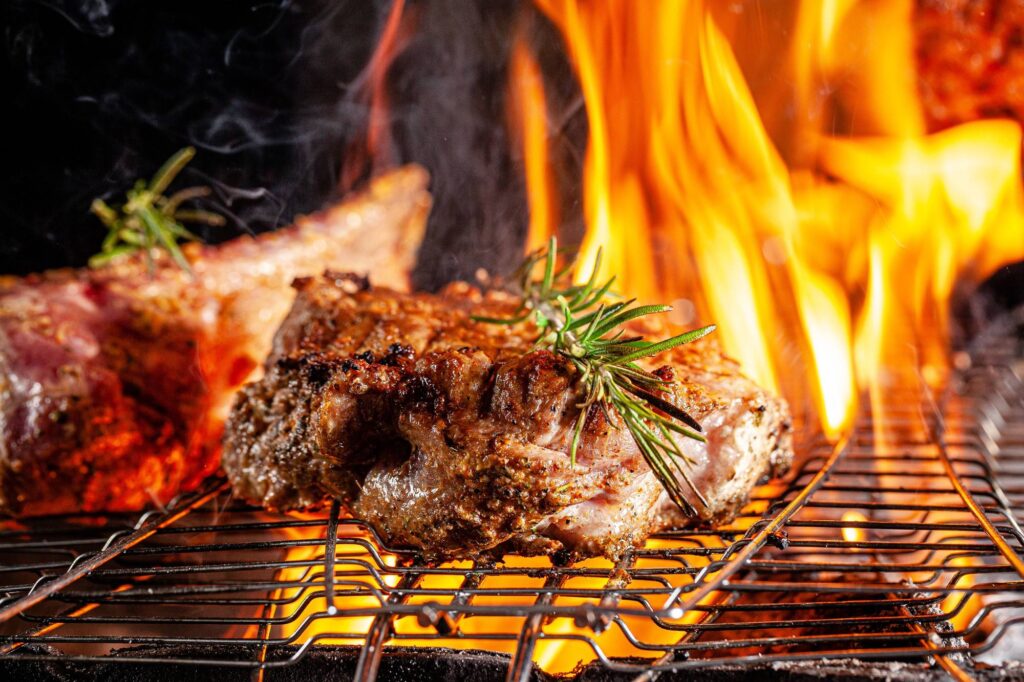Last Updated on 3 years ago by Nicky Johnson
Regarding charcoal and gas grilling, everyone has their preferences. But which grill kind is the best? Is there a right option while creating mouthwatering grilled recipes? Here are the features of charcoal and gas barbecues rounded up, so you may choose the right one for your upcoming terrace party. Many bbq store have both these options available, but you must have an informed choice.
The dispute over using a gas grill vs. a charcoal grill for preparing a BBQ is ancient, and people frequently side with one. Is one genuinely superior to the other? Does only appropriate charcoal produce that smokiness, and what exactly is “appropriate” charcoal?
Since both the options are excellent, their demand is quite distinctive. This blog will simplify things for you.

Attributes To Look For In Charcoal Vs. Gas BBQ Grills
Blog Contents
Cost Variety
- Gas: Gas or gasoline barbecues range from $129 to $299 for the most common models, while grills with extra features can cost as much as $1,500. You may get as many bells and frills as you like, but there are usually excellent prices on reliable gas grills that’ll last you a lot longer.
- Charcoal: You can purchase a charcoal model for a minimum of $25. These are ideal for camping or trekking excursions because they are 100% biodegradable and lightweight.
Temperature
- Gas: To perfectly sear steaks, you’ll need to reach temperatures of roughly 600 degrees Fahrenheit, which may not be possible with specific, less expensive devices. However, many companies offer grills with better engineering and fewer Units per annum, using less gas and operating more effectively. When shopping, inquire about the grill’s capacity and flame configuration.
- Charcoal: 700 degrees Fahrenheit is the maximum temperature a fully loaded charcoal grill can reach. The temperature depends on the kind of charcoal used. BBQ store pit masters argue that grilling with smoke at temperatures above 200 degrees Fahrenheit is the only way to cook authentic barbecue, and charcoal is king in this regard.
Assembling
- Gas: A mid-range gas grill will take about 2 hours to install because they are more complex than charcoal grills.
- Charcoal: You can expect a charcoal grill to take no more than 30 minutes to set up.
Maintenance
- Gas: You must inspect the fuel and gas lines, swap out the flavor briquettes as needed, and top off the gas canisters. Maintaining clean burners, an ignition collection box, and a dripping tray is also recommended, as is occasionally replacing the ignition or grates.
- Charcoal: Depending on your use, the grill plates should be updated yearly or every other year. However, the maintenance is much less with an electric charcoal igniter than with a traditional model.
Flavors
- Gas: Grilling delicate items that can be overpowered by smoke, such as chicken filet, seafood, fruits, and veggies, is simple with gas. A charcoal barbecue’s smoky effects can be achieved with a smoke box.
- Charcoal: Your chicken, steaks, pork chops, and other grilled meals will always have a smoky flavor with a charcoal grill.
Conclusion
Ultimately, it comes down to personal choices. If you’re a super-skilled cook who wants to practice and learn how to cook using hardwood or charcoal meticulously, buy that, get out, and wow your friends.
But if you merely would like to cook for a large group, grilling burgers, sausages, and perhaps the occasional kebabs, or if you want to do some fast outdoor grilling, invest in a reliable barbecue grill to last you for a long time. So, take a closer look at the cost variety, maintenance, assembling, etc. and choose what fits you best.







